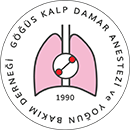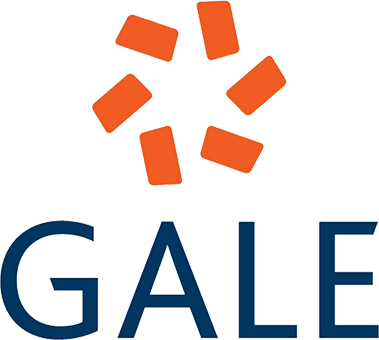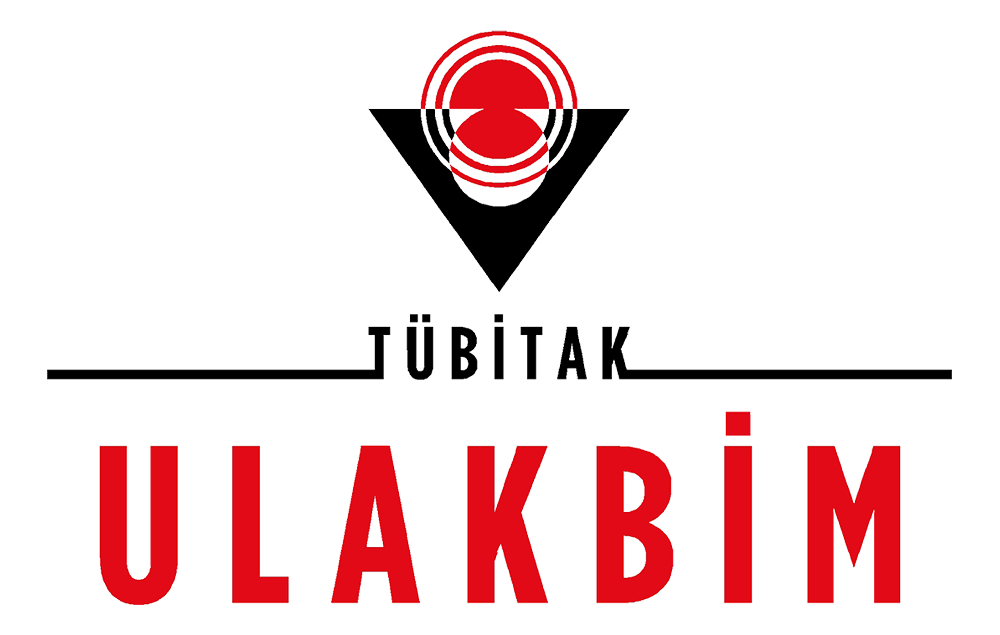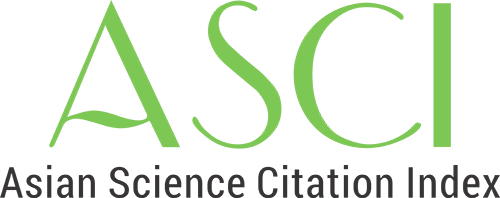

Volume: 21 Issue: 1 - 2015
| REVIEW | |
| 1. | Difficult Airway Management in Patients Undergoing Cardiac Surgery Deniz Kızılay, Ayten Saraçoğlu, İbrahim Haluk Kafalı doi: 10.5222/GKDAD.2015.001 Pages 1 - 7 (2877 accesses) Encountered due to anesthesia deaths are caused mostly by problems during the process of providing airway. Difficult airway definition, is used for cases involving difficult tracheal intubation, difficulty in ventilation via a face mask by a trained anesthetist or both. Patients with cardiovascular disease are considered in the featured patient group. The number of patients undergoing cardiac surgery with today's living conditions are increasing every day. The cardiovascular responses during difficult airway management in patients undergoing cardiac surgery may lead to various complications. In this review, we aimed to evaluate the difficult airway management in patients undergoing cardiac surgery and to determine the differences. |
| EXPERIMENTAL WORK | |
| 2. | Propofol Versus Dexmedetomidine For Postoperative Sedation In Fast-track Cardiac Anesthesia Zeynep Pestilci, Demet Sergin, Işık Alper, Seden Kocabaş, Sezgin Ulukaya, Fatma Zekiye Aşkar doi: 10.5222/GKDAD.2015.008 Pages 8 - 15 (1075 accesses) OBJECTIVE: In this prospective, randomized, double-blind study, we aimed to compare the effects of propofol and dexmedetomidine on postoperative sedation, respiratory and hemodynamic parameters and patient satisfaction in patients who underwent coronary artery by-pass grafting surgery. METHODS: Methods: Forty-two ASA II-III patients aged between 40-75 years, with ejection fraction higher than 40% were included to the study. Following induction, anesthesia was maintained by propofol 1 mg kg-1 hr-1, fentanyl 0.5 μg kg-1 hr-1 and 3-6% desfluran. Immediately after sternum closing and stopping fentanyl infusion, patients were allocated into either dexmedetomidine group (Group D, n: 21) to receive dexmedetomidine (0.2-0.7 μg kg-1 hr-1) or reduced doses of propofol (Group P, n: 21) (0.2-0.7 mg kg-1 hr-1) for patients sedation. Postoperative sedation and pain were assessed by Ramsey Sedation Scale and VAS, respectively. Patients were extubated upon sufficient clinical conditions were achieved. Hemodynamic and respiratory parameters, pain and sedation levels, thoracic drainage and patient satisfaction until the time of extubation were assessed. RESULTS: Time to weaning (65±42 vs 104±70 min) and extubation time (207±57 vs 249±68 min) were shorter in Group D (p<0.05). Time in ICU, total analgesic consumption, thoracic drainage, hemodynamic and gastrointestinal complications in both groups were similar (p>0.05). There was no significant difference in patient satisfaction (p>0.05). CONCLUSION: By restoring hemodynamic stability and shortening weaning and extubation times, without any side effect, dexmedetomidine appears to be a beneficial and safe alternative to propofol in fast-track cardiac anesthesia when used as direct infusion without loading dose. |
| 3. | The Effects Of Preoperative Beta-Blocker Using On Postoperative Complication In Coronary Artery Bypass Grafting Surgery Patients With Cronic Obstructive Pulmonary Disease Meryem Radovuş Doylan, Murat Aksun, Nagihan Karahan, Senem Girgin, Volkan Kuru, Orhan Gökalp, Atilla Şencan, Lale Koroğlu, Kaan Katırcıoğlu, Gülçin Aran doi: 10.5222/GKDAD.2015.016 Pages 16 - 22 (1126 accesses) OBJECTIVE: In this study, we compared patients with cronic obstructive pulmonary disease (COPD) and without COPD, both taking pre-operative beta blockers, undergoing elective coronary artery by-pass grafting (CABG) surgery, in terms of postoperative extubation time and intensive care unit length. METHODS: In our cross-sectional study, computer and file data of a total 2423 patients undergoing coronary artery bypass grafting surgery between 01.05.2005 and 31.05.2012 were retrospectively reviewed. Patients who were diagnosed as COPD by pre-operative physical examination and/or respiratory function tests and had been hospitalized and were followed by diseases of chest with COPD were considered to be the COPD group (Group 1). The remaining patients were considered as the control group (Group 2). RESULTS: 687 patients were included in the study. The mean extubation times in Group 1 and Group 2 were 906±667 min and 830±561 min respectively. There was no statistically difference between the two groups. The mean intensive care unit length of stay in Group 1 and Group 2 patients were 3.6±2.7 days and 2.9±1.5 days respectively. It had been found that the intensive care unit length of stay in Group 1 was more than Group 2. CONCLUSION: While existence of COPD in patients who are using beta blockers at the pre-operative period does not make a difference in extubation time, it extends the intensive care unit length of stay. We think that this situation could depend on complications like pneumonia and low PaO2 which were seen frequently in patients with COPD during postoperative period. |
| 4. | Comparison of Double Lumen Endobronchial Tube and Bronchial Blocker Applications in One Lung Ventilation Sami Eksert, Gökhan Özkan, Mehmet Emin İnce, Vedat Yıldırım, Tarık Purtuloğlu, Ömer Yanarateş, Ercan Kurt doi: 10.5222/GKDAD.2015.023 Pages 23 - 29 (1588 accesses) OBJECTIVE: Double-lumen endobronchial tubes and bronchial blockers are often used in one-lung ventilation. In this study, we aimed to determine the advantages or disadvantages of bronchial blockers than double-lumen endobronchial tubes and to demonstrate bronchial blockers are an alternative or a more appropriate tool for airway than double-lumen endobronchial tubes in one-lung ventilation. For this aim, we studied 80 ASA physical status I-II patients scheduled for one lung ventilation, in a prospective, randomized clinical trial. METHODS: Patients were divided randomisely into four groups as left double-lumen endobronchial tube (n= 20), right double-lumen endobronchial tube (n=20), left bronchial blocker (n=20), right bronchial blockers (n=20). The time required for double-lumen endobronchial tube and bronchial blocker placed by fiberoptic bronchoscopy, determination of double-lumen endobronchial tube or bronchial blocker's malposition by fiberoptic bronchoscopy in the lateral decubitus position and during the operation, evaluation of lung collapse by the surgeon, postoperative sore throat/swallowing difficulties were identified. RESULTS: The time required for the placement in double-lumen endobronchial tube group (7.53 ± 2.41 min) was longer than bronchial blocker group (5.50 ± 2.63 min) (p <0.05). The placement times were found 7.02 min at left double-lumen endobronchial tube group, 8.05 min at right double-lumen endobronchial tube group, 6.70 min at left bronchial blocker group and 5.92 min at right bronchial blocker group. When each group separately compared with each other, there was statistical significant difference between right double-lumen endobronchial tube and right bronchial blocker (p=0.003) groups and between right double-lumen endobronchial tube and left bronchial blocker groups (p=0.03). There was no significant difference between groups in terms of lung collapse, malposition, surgical exposure and postoperative sore throat/ swallowing difficulties. Both double-lumen endobronchial tube and bronchial blocker are used in thoracic surgery provides effective lung ventilation. CONCLUSION: As a result, bronchial blockers placed with the fiberoptic bronchoscopy in order to provide one lung ventilation have similiar malposition rates, lung collapse capabilities and postoperative sore throat/ swallowing difficulty rates as double-lumen endobronchial tubes and bronchial blockers have shorter insertion times than double-lumen endobronchial tubes. So we think bronchial blockers are good alternatives of double-lumen endobronchial tube. |
| 5. | Retrospective evalution of the patients who were affected by syrian civil war Ertuğrul Kilic, Barıs Demiriz, Mehmet Levent Uygur, Murat Sürücü, Kadir Çınar, Abdullah Emre Yıldırım doi: 10.5222/GKDAD.2015.030 Pages 30 - 34 (1064 accesses) OBJECTIVE: The aim of this study examine of the clinical status of patients requiring intensive care who was affected by the Syrian civil war. METHODS: 01.01.2013-31.12.2013 Between GICU what the underlying total number of patients, APACHE II scores, mortality rate and Syria civil war affected GICU what is considered the number of patients, APACHE II scores, bed occupancy rates and mortality rate were compared. RESULTS: Syrian civil war affected patients, mean age, gender distribution, average length of stay, admission indication, exitus were and the number of patients who accepted GICU is 795. 55 (6.9%) of them could not be considered the admission to GICU. retrospectively evaluated in terms of factors affecting. Of GICU in 159 of 740 patients who were followed up (21.4%) affected by the civil war in Syria firearm injuries or medical problems that patients have been foreign nationals. Mean age 34.3 ± 12.4, the gender distribution of 36 women (22.6%), 123 men (77.4% ) and the mean APACHE II score was 24.2 ± 13.7 is. The most common indications for hospitalization; very focused shrapnel injuries (42.7%), firearms subservience subarachnoid hemorrhage (SAK) (42.1%), from the chest gunshot wounds (5.6%). Of GYBU in 4300, while the total number of hospitalization days of Syrian origin in 1558 the number of days of hospitalization (36.2%) respectively. Mean duration of hospitalization was 9.7 days. GICU 's average mortality rate in 2013 was 26 % in patients with Syrian origin, this ratio was 30.8% with 49 exitus. 12 of the patients who died (24.4%) were females. The standardized mortality ratio [observed mortality (49/ 159), according to the APACHE II score of expected mortality rate (48 /159) ratio] is 1.02. CONCLUSION: APACHE II score is high, gunshot wounds is high and from a distance of over 100 kilometer of patients with unfavorable conditions increase the mortality rate of transplantation was observed. |
| 6. | Noninvasive Mechanical Ventilation For Acute Respiratory Failure Occured After Cardiac Surgery Esra Eker, Ceren Köksal, Türkan Kudsioğlu, Nihan Yapıcı, Zuhal Aykaç, Ali Kemal Gür, Özgür Gürsu, Selvi Asker doi: 10.5222/GKDAD.2015.035 Pages 35 - 41 (1641 accesses) OBJECTIVE: : To research the effect of using non-invasive mechanical ventilation (NIMV) on the respiratory and hemodynamic parameters in acute respiratory failure those develop during early postoperative period in Chronic Obstructive Pulmonary Disease (COPD) patients who underwent heart surgery. METHODS: Forty (40) COPD patients, who underwent open heart surgery and developed acute respiratory failure following extubation, were included to the study. Patients without spontaneous respiration, who had myocardial infarction, arrhythmia, hypotension or developed shock, uncooperative, have intense secretion and facial anatomic abnormalities were excluded from the study. NIMV was applied by using oronasal mask; Postoperative period 30th minute Respiratory rate>24/min and/or in artery blood analysis; PaCO2>50mmHg, pH<7.30, PaO2 value is below 60 mmHg or PaO2/FiO2<250 patients were applied 5cmH2O PEEP, 15cmH2O Pressure Support ventilator settings. PaCO2<45mmHg and PaO2/FiO2>300 were targeted. RESULTS: : Mean arterial pressure (MAP), heart rate, respiratory rate, PaCO2, PaO2, pH results of the patients recorded 1 and 2 hours after the NIMV application were changed significantly than before NIMV statistically (p<0.05). PaO2 was higher than pre NIMV and PaCO2, heart rate, pH and MAP were found lower. CONCLUSION: : Appropriate use of NIMV improves the patient's respiratory and cardiac parameters In COPD patients those underwent open heart surgery and respiratory failure developed after extubation. This can shorten the duration of the patients intensive care unit and hospital stays by preventing repetitive intubations and complications of mechanical ventilation complications. |
| REVIEW | |
| 7. | Nursing and Practices That Speed up Healing in Heart Surgery Aynur Koyuncu, Fatma Eti Aslan, Ükke Karabacak, Ufuk Demirkılıç doi: 10.5222/GKDAD.2015.042 Pages 42 - 50 (1331 accesses) Fast track protocols are defined as practices, which speed up the healing process after operation. In heart surgery, practices such as minimally invasive surgical techniques, epidural and regional anesthesia are becoming popular. Practices such as optimal pain control, early extubation, early mobilization, early nourishment, reducing blood transfusions, maintenance of normothermia reduce the surgical stress response, complications, length of hospital stay and costs and speed up the healing process. Nowadays, fast track protocols have become a field, which is studied intensively in the heart surgery. The aim of this article is to collect the literature information, regarding practices, which speed up the healing process in the intensive care after operation. Fast track protocols represent a dynamic process, which gives the patient's individuality prominence, rather than standard practices and which requires continuous monitoring and evaluation. Creating team synergy is a factor, which will increase the applicability of multimodal approaches and the success of fast track protocols. |
| CASE REPORT | |
| 8. | Rapidly correction of profound hyponatremia: a case report Ufuk Kuyrukluyıldız, Güldane Karabakan, Orhan Binici, Fatih Özçiçek, Ayşin Alagöl doi: 10.5222/GKDAD.2015.051 Pages 51 - 54 (3172 accesses) 44 Years old Caucasian patient was unconscious with Glasgow Coma Score: 10 when admitted to the emergency department, and Biochemical analysis of sodium was111 mEq / L. Control sodium was 117 mEq / L after infusion of 1000 cc SF in the emergency department. In accordance with the guideline, an infusion of 150 cc 3% NaCl was performed in 20-minute.Control of sodium was 121 mEq / L, respectively. Infusion of 150 cc of 3% hypertonic NaCl was replicated in 20 minutes. The control value was 125 mEq / L. In line with algoritm 0.9% saline replacement was continued. At 24 hour and 48 hour sodium was 127 mEq / L and 134 mEq / L, respectively. Extubated on the 4th day of admission to the intensive care unit. On the 5th day was transferred in the psychiatry department. Any pathology in cranial MRI results werent observed on the 10th day. The patient whose clinical examination was natural, discharged from hospital on the 11th day. Conclusion: we have achieved clinical success in our profound hyponatremia case without any complications by reaching the goal of increasing the sodium levels in the first hour at least 5 mEq/L as stated in the hyponatremia guideline prepared by ESICM, ES and ERA-EDTA. |
| 9. | Negative pressure pulmonary edema after septoplasty İsa Yıldız, Sibel Akgül, Hülya Erten, Hacı Yusuf Güneş, Ümit Moğulkoç, Hakan Bayır doi: 10.5222/GKDAD.2015.055 Pages 55 - 58 (1759 accesses) Negative pressure pulmonary edema (NPPE) is an extremely rare yet life-threatening complication developed immediately after the upper airway obstruction. Laryngospasm is the most common cause and NPPE often presents with hypoxia. We present here a case of 24-year-old male undergoing septoplasty, who developed post-extubation NPPE after episode of laryngospasm and mainly treated with non-invasive positive pressure ventilation. |
| 10. | Negative Pressure Pulmonary Oedema triggered by laryngospasm due to secretion of hypofarynx Rabia Koçulu, Zeliha Aslı Demir doi: 10.5222/GKDAD.2015.059 Pages 59 - 62 (1134 accesses) Negative-pressure pulmonary edema; seen in the early postoperative period after general anesthesia, usually due to upper airway obstruction is a complication. In this paper we aim to discuss negative-pressure pulmonary edema triggered by laryngospasm due to secretion. |
| 11. | Symmetrical Peripheral Gangrene: A Case Study Faruk Çiçekci, Çiğdem Sizer, Şule Arıcan doi: 10.5222/GKDAD.2015.063 Pages 63 - 66 (980 accesses) Symmetrical peripheral gangrene is defined as multiple (two or more) extremity ischemia without the existence of a major vein occlusion. A 78-year-old female patient was admitted to the intensive care unit for hypertension, chronic obstructive lung disease, congestive heart disease, and cerebrovascular attack. The patient stayed hypotensive in spite of high-dose vasopressor treatment. After the development of sepsis and DIC, fast-developing gangrenous necrosis was observed and was most apparent in the right foot and in the 1st, 2nd, and 3rd distal digits of the right hand. Infusion of noradrenaline and other vasopressor agents was gradually decreased and stopped. Intensive fluid replacement with Rheomacrodex and pentoxifylline was administered for SPG treatment. Cyanotic appearance in the foot disappeared, but dry gangrenous forms in the right hand became permanent. The patient died due to multiple organ failure on the 18th day of intensive care. |
| LETTER TO THE EDITOR | |
| 12. | Does anaphylaxis observed after oxytocin infusion during caesarean really due to oxytocin? Berrin Günaydın, Ayça Taş Tuna, Hakan Dayanır, Figen Atak doi: 10.5222/GKDAD.2015.068 Pages 67 - 68 (1077 accesses) Abstract | |
| 13. | Anaesthetic management of coronaryartery bypass surgery in a patient with myotonic muscular dystrophy Türkan Kudsioğlu, Hüseyin Kuplay, Nazan Atalan, Gökçen Orhan, Nihan Yapıcı, Zuhal Aykaç doi: 10.5222/GKDAD.2015.069 Pages 69 - 70 (893 accesses) Abstract | |

















